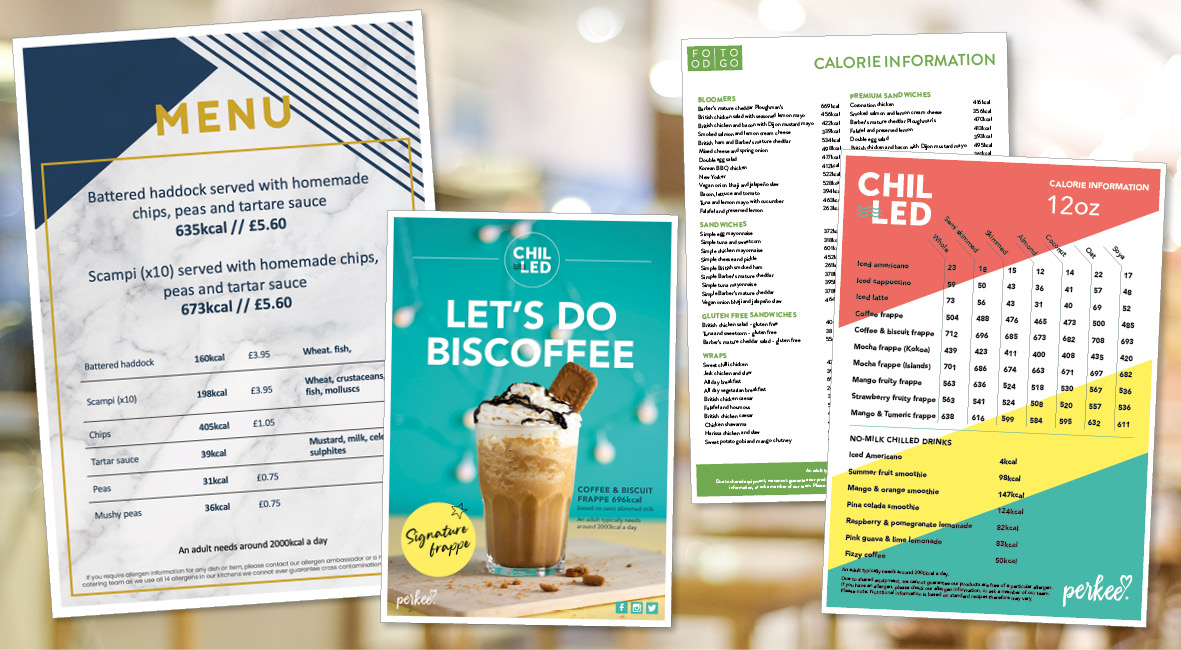Expert Guides
Calorie information on menus

The British Government implemented a law that requires all businesses to display calorie information on menus.
Calorie labelling legislation
Currently, in the UK, we live in an obesogenic environment. Out-of-home dining accounts for approximately 20-25% of people’s diets. This is leading to an extra 200 calories being consumer per person, per day compared to eating at home. The government passed the legislation to include calories on menus as part of their obesity strategy. The aims are:
-
To help encourage consumers to make healthier choices
-
For businesses to reformulate their food and drink offers to provide lower-calorie options.
The legislation requires all businesses with more than 250 employees in the out-to-home sector to display calorie information per serving on menus at the ‘point of choice’. These outlets include cafes, restaurants, and take-aways. This includes physical and online menus and all other delivery platforms. The legislation will be reviewed after 5 years. In the meantime, it is also voluntary and recommended for smaller businesses to consider providing calorie information.
Best practice for displaying calorie information
-
Display calorie information at the customer’s point of choice
-
Display the calorie content of the food in Kilocalories (Kcal)
-
Calorie information must relate to food items’ portion’ size. For example – Apple pie, 296kcal per slice
-
The ‘statement of daily calorie needs’ must be included as a guide for consumers i.e. ‘An adult needs around 2000kcal a day’
-
Calorie information needs to be accessible for consumers, this means visible, easily readable, and not hidden
Note: Menus without calorie information can be provided if requested by a customer. It is at the caterer’s discretion whether the request is feasible, practical and reasonable.
Examples of foods that are exempt from calorie labelling
-
Food or dishes that appear on a menu for less than 30 consecutive days or 30 days in the calendar year, this allows flexibility to reduce food waste and use seasonal produce
-
Beverages that contain over 1.2% by volume of alcohol
-
Food items that are provided or sold on the behalf of a charity
-
Condiments that are added by the consumer after purchasing their food item
-
Food or menu items that aren’t on the menu but requested by customers
Tips to display calorie information
Meal deals and build your own
Includes deli and salad bars. Provide calorie information for each individual item. It is not necessary to display calories for food items that are on ‘special offer’ or that have been on the menu for less than 30 days.
Coffee and tea menu boards
Provide calorie information on the menu board for the standard milk on offer i.e., semi-skimmed milk. Refer customers to a menu that displays the calorie contents for the other milk varieties available.
Sharing platters or whole cakes
Provide the calorie information for the whole item along with how many people it should serve.
Calorie calculations
It is the business’s responsibility to ensure the calorie information provided is as accurate as possible. Unfortunately, many variables can make calculating calorie content complex and time-consuming. Using nutritional software is beneficial and helps reduce the labour required.
BM uses a nutritional software. This provides us with the following:
-
A database of all our supplier’s datasets including allergens and nutritional information. Our suppliers regularly update this information.
-
Documentation for all recipes. Including cooking methods and weight change factors. This improves the accuracy of the nutritional information.
-
Ability to produce menus that include allergens and calorie information.
-
McCance and Widdowson’s Composition of Foods nutrient data when local purchasing takes place.
Note: There is inherent variation in ingredients. There is a 20% variable that will be an acceptable margin between the declared and the actual calorie values.
Implementing calorie legislation: the keys to success
Training
-
Plan training around the businesses needs to put in place the law changes
-
When using software, ask your provider for help
-
Improves the team’s knowledge and understanding of the legislation by outlining their responsibilities
Communication
-
Hold regular drop-in sessions to answer any questions or concerns, follow up with FAQ sheets for the teams
-
Provides reassurance and confidence
-
Support clients with their specific needs if any concerns arise
Review
-
Carry out regular audits to ensure compliance
-
Check team members’ understanding. This can highlight any knowledge gaps that need further training
How will the legislation be enforced?
Enforcement officers are responsible for ensuring that caterers comply with the legislation. They will be looking for:
-
Presence of calorie information on menus, hospitality brochures, etc.
-
Is the information displayed as per the legislation’s requirements?
-
The method used to calculate the calorie information – is it appropriate and reliable?
-
Is the calorie information displayed correctly on online ordering platforms?
-
Failure to comply with the legislation will result in an improvement notice and/or a monetary penalty of £2,500.
Tip: When following the 30 days exemption, it’s important that evidence is kept and dated.
Remember: Enforcement officers are looking for a proven system and a through thought process.
Further information from official websites: Calorie labelling in the out of home sector: implementation guidance





